In the last article on “How to make a 1 hour ambient track in 5 minutes with editing tools” we walked through how to make a long ambient track very quickly with some simple editing tools. In this article we will be taking a look at how to not have to make extensive edits while still improving the quality of the sound through a synthesis technique called granular synthesis.ç
The idea of granular synthesis first emerged as a potential computer music tool in 1971 by Iannis Xenakis. It was approached with the perspective that any sound could be represented by a subset of slices. Cutting very small pieces of an audio sample and shuffling pieces of a sample in time to create a representation of a desired sound is the basis of granular synthesis.
We will be using this approach as sound designers to not have to create the previous edits we made for every block of time to make a continuous sound.
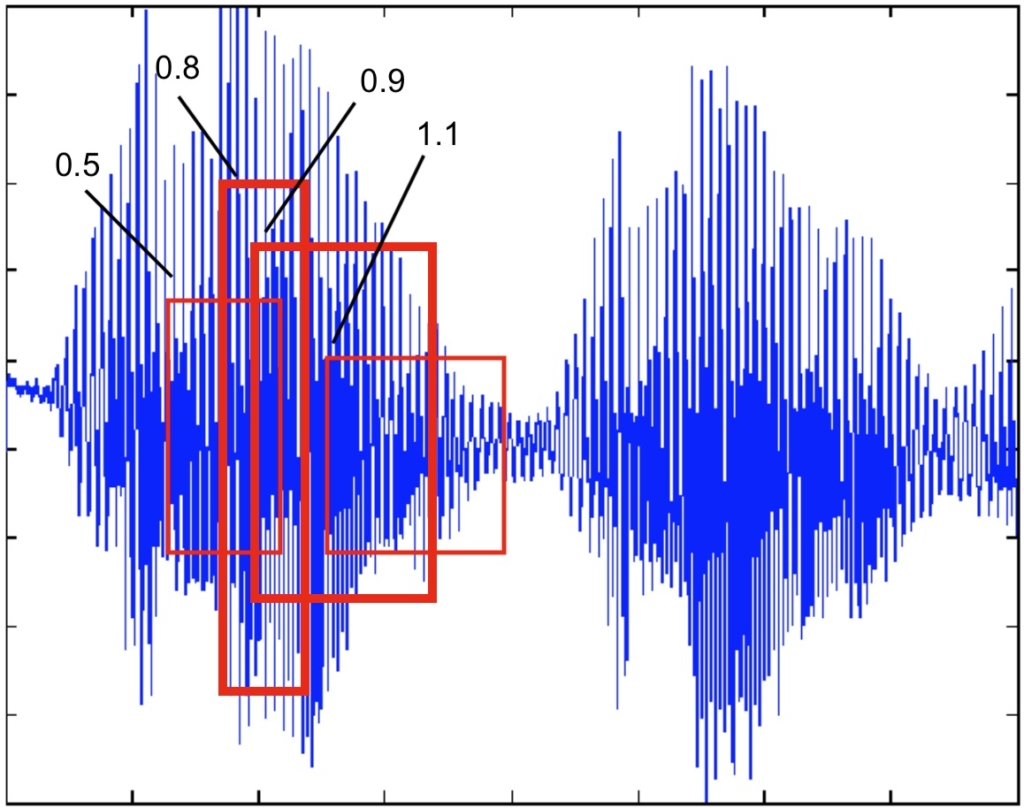
How does a granular synthesizer work?
First a granular synthesizer takes in an incoming signal and stores it in memory. A fraction of the sample width is chosen. A delay time is chosen for the time between playback of the slices of the selected location in the audio. In the above image each red box can be thought of as a slice and is referred to as a grain.
As each grain of the audio is played back at a slightly different location there is an amplitude (volume) envelope smoother that is applied across the samples to prevent discontinuities. Therefore the output of the synthesizer does not have abrupt audible chops in the signal. Our ear now perceives a very smooth transition across the audio samples as a result of the envelope smoother. The smaller the gap between the delayed samples and a smaller size of those samples will allow us to achieve a more constant sound. If our sound source or sample width has many discontinuities and the width of our playback grains in the granulator are very large then we will perceive these as the listener.
As you can see it is much easier and feasible to achieve a very smooth amplitude between our samples in comparison to the prior editing technique where we had to manually apply and check volume fades between samples.
I am going to be using “The Mangle” by Sound Guru as my reference granulator instrument to show you the main elements to a typical granular instrument. “The Mangle ” allows you to see modulations and the audio signal very easily. I would highly recommend the device to anyone interested in granular synthesis.
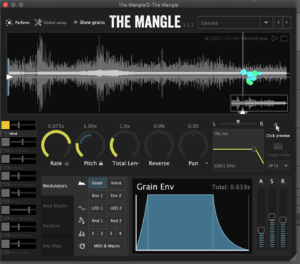
How do we use a granulator?
First I have dropped the prior raw wind sample into the instrument at the top sample slot where the audio file is now showing.
In the first example I am moving the X Y positions to find the main reference playback position to reference the grains in the file. I am looking for a position that is consistent in amplitude, texture, and pitch as we want the sound to be constant first and then have the option of adding slight variances later to it. You can hear me moving the X Y position in the following audio clip. At the very end of the clip you can hear we have found a very consistent point in the audio file which continues without variance.
I have gone ahead and applied a lowpass filter at 6800 Hz. This is to help us create a more blurred attack between each of the launched grains in playback so our ear does not hear the changes between one grain and the next as easily.
By utilizing the modulation matrix we can make subtle changes to the parameters (rate, pitch, total length, amongst others) to achieve a more believable randomisation of events.
In the next audio sample you can hear me start with a very slow rate on the playback, then increase it to 0.075 seconds, lower the pitch of the samples, set the pitch back to 1.00x, lower the total length of each of the samples, and then pull the length back to 1.6x so each grain carries for 1.6 seconds.
What happens when we modulate the reverse amount? As we can see in the following image samples are being played in reverse from the selection point as well as forwards in sample time:
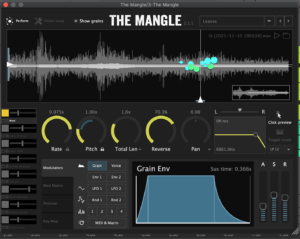
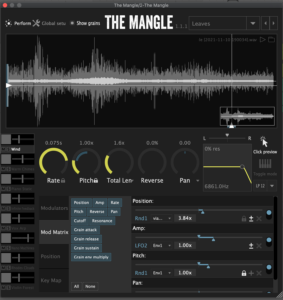
On the left part of the above image we have the option to combine sounds together, but we will just be using one wind sound today. In the bottom to the right of the modulation matrix in the image before the last we have our envelope processor that allows us to shape the transition points of the instrument sound.
When we play our midi keyboard we can visually see the grains getting played back in real time.
For the visual learners we can think of granulation as an auditory pointillism. We are creating a type of sound where when you zoom in you can see each point, but when you zoom out and have all the points together we cannot perceive the tiny dots of the painting.
Further exploration
For further exploration to create convincing nature sounds without sound samples you may want to looking into procedural audio generation, but to make a quick soundscape that is accurate to nature, granular synthesis is a faster option.
I hope this was a good overview of the granulation process for you. Based on the types of sounds you want to make you can use these techniques to explore making ambient sound layers in whichever medium of audio you are working in.

As we can see there are no distracting discontinuities in the signal and by extending the midi note we could have this wind sound continue infinitely.
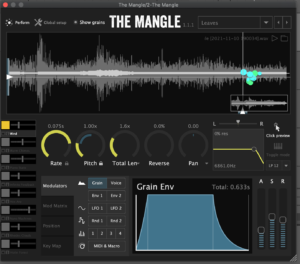






 50 Industry Music Production Tips You Must Know
50 Industry Music Production Tips You Must Know




